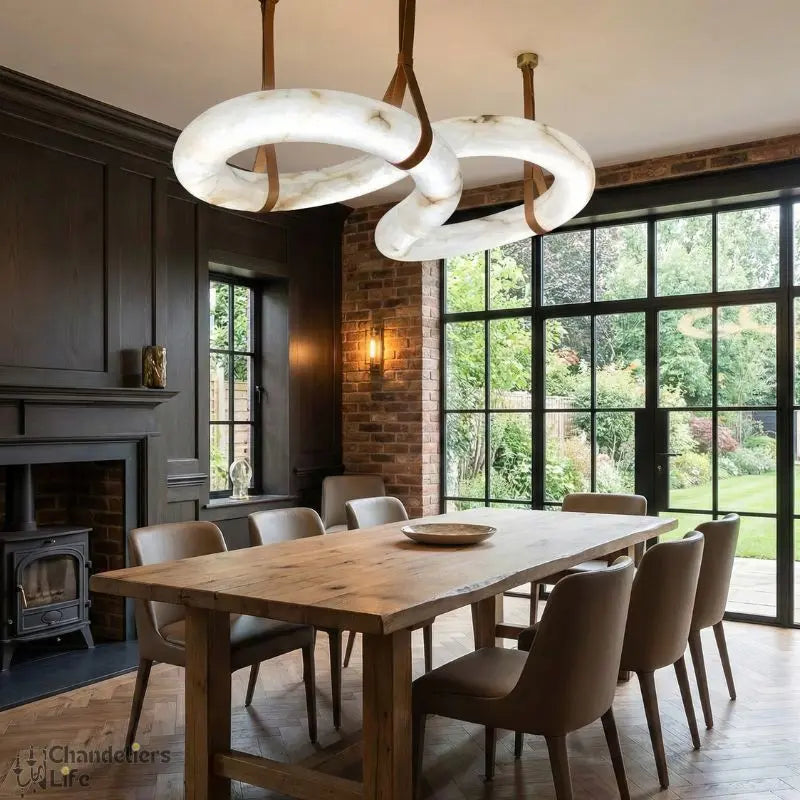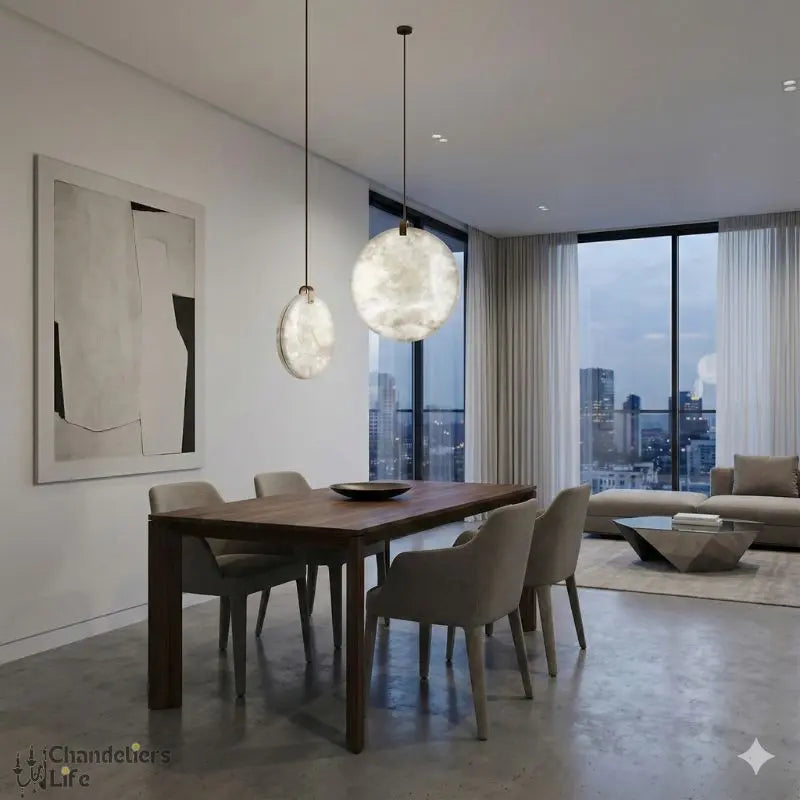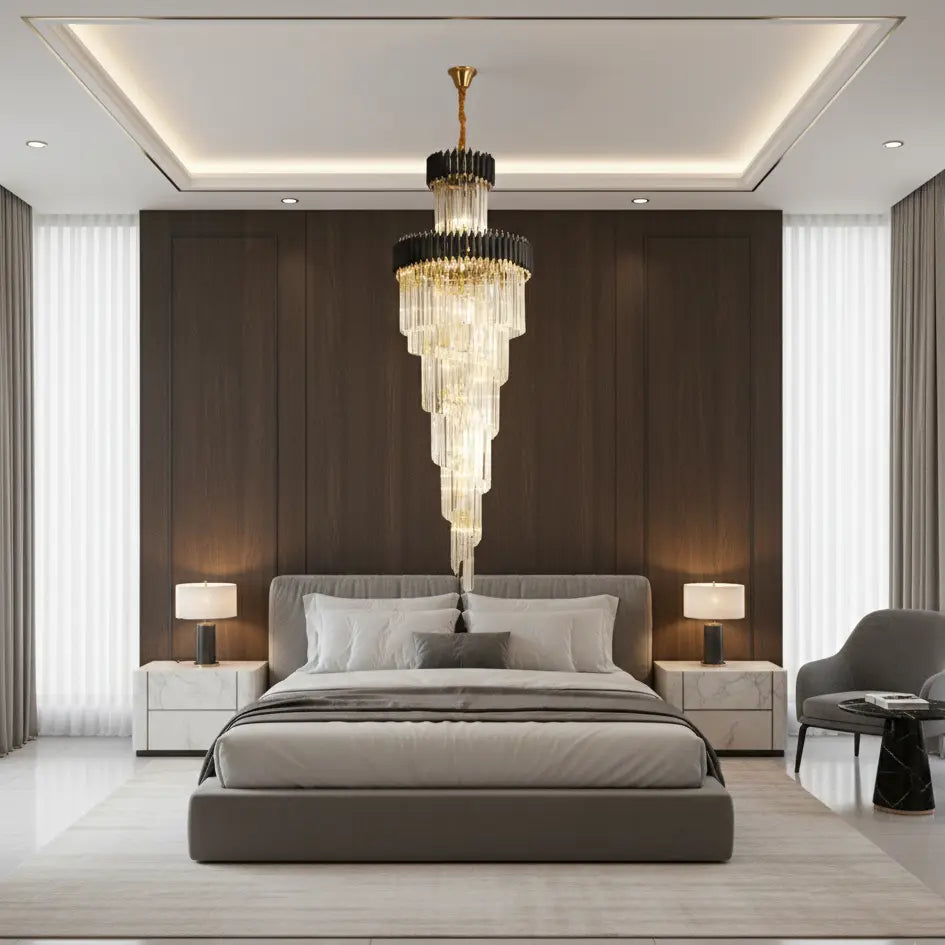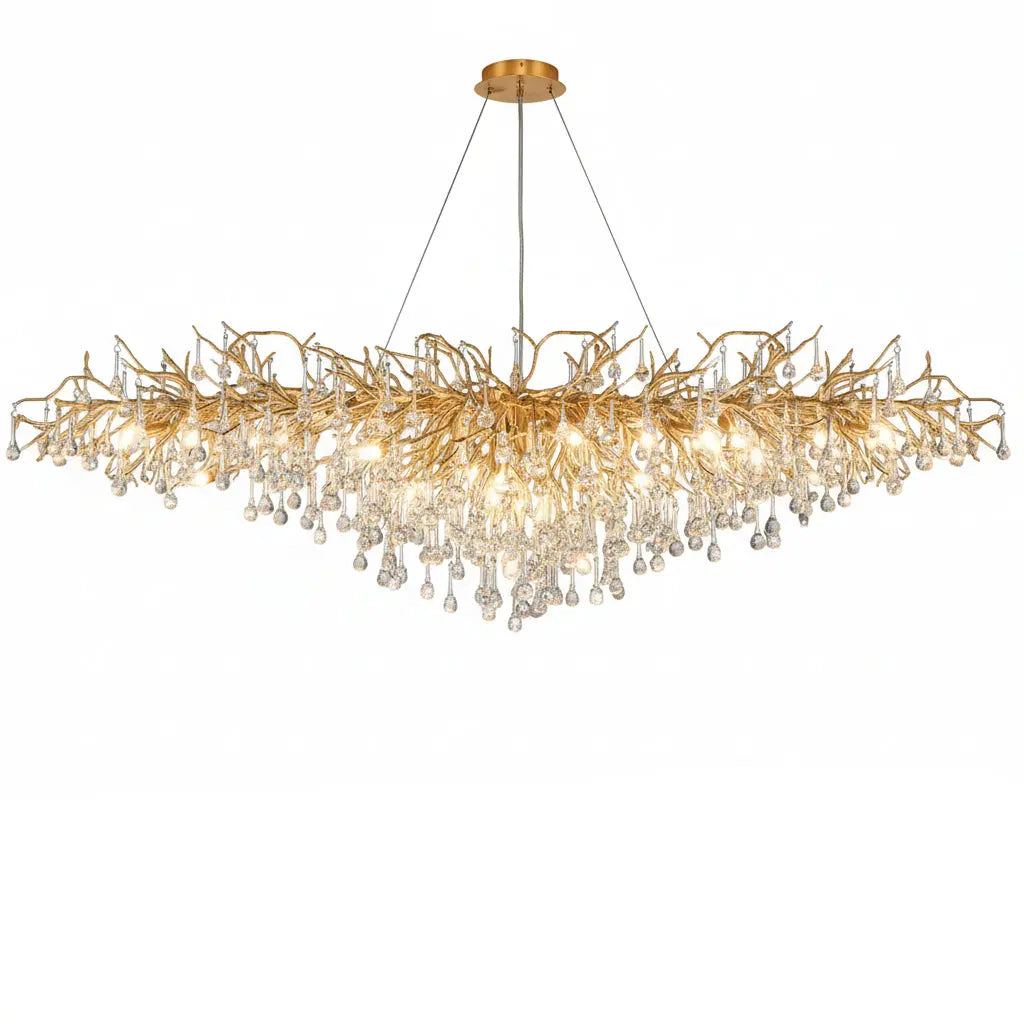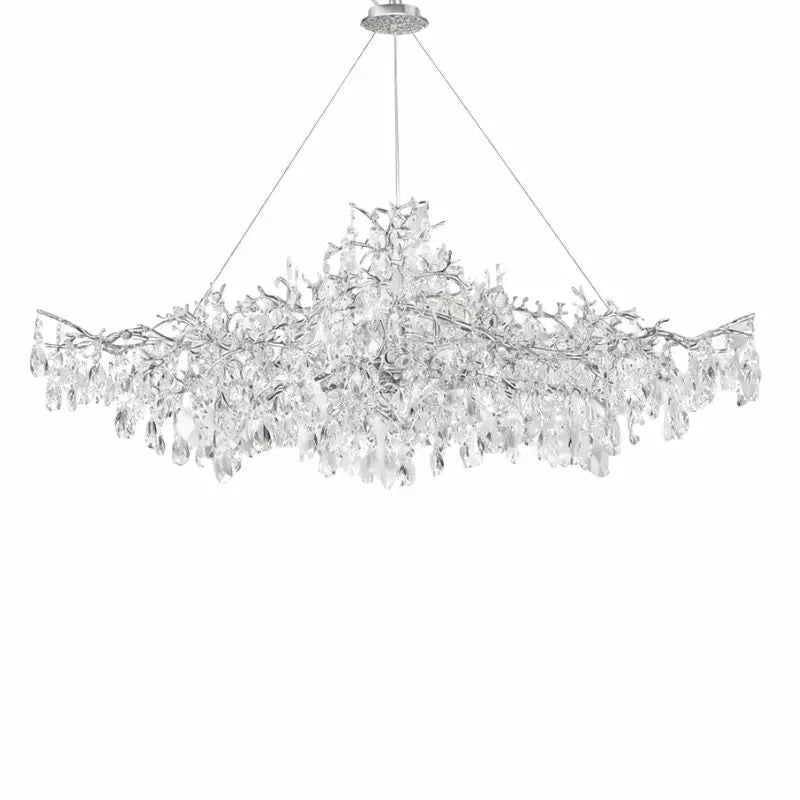Choosing the right lighting for your warehouse can significantly improve overall efficiency and safety. This article explores various types of warehouse lighting fixtures, how to plan your layout, maximize energy savings, and ensure safety while also considering cost-effectiveness and productivity enhancement. Understanding these factors is key to creating a well-lit and efficient workspace.
Key Takeaways
- Proper fixture spacing is vital to avoid dark spots and ensure even lighting.
- High ceilings need specific fixtures like LED high bays for optimal illumination.
- Using smart sensors can help control lighting zones and save energy.
- Emergency lighting is essential for safety and must be regularly tested.
- Incorporating natural light can reduce energy costs and improve the work environment.
Understanding Different Types of Warehouse Lighting Fixtures
When it comes to warehouse lighting, choosing the right fixtures is essential for efficiency and safety. Here’s a breakdown of the most common types:
LED vs. Traditional Lighting
- LED lights are known for their energy efficiency, consuming up to 70% less energy than traditional options. This not only reduces electricity costs but also minimizes maintenance needs due to their long lifespan.
- Traditional lighting, like metal halide, may provide bright light but often comes with higher energy costs and shorter lifespans.
High Bay vs. Low Bay Fixtures
| Fixture Type | Ideal Ceiling Height | Best Use Cases |
|---|---|---|
| High Bay Lights | 15 ft and above | Large open areas, warehouses |
| Low Bay Lights | Below 15 ft | Smaller spaces, aisles |
- High Bay Lights are perfect for large, open areas, providing powerful illumination.
- Low Bay Lights are designed for lower ceilings, ensuring adequate lighting without wasting energy.
Task Lighting for Specific Areas
- Task lighting is crucial for areas where detailed work is performed. Consider these options:
- UFO High Bay Lights for large spaces.
- Wall Lights for perimeter areas.
- Corn Bulbs for versatile applications.
Proper lighting not only enhances visibility but also contributes to a safer work environment. Choosing the right fixtures can significantly impact productivity and safety.
Incorporating industrial style home decor can also enhance the overall aesthetic of your warehouse while ensuring functionality. By understanding the different types of lighting fixtures available, you can make informed decisions that maximize efficiency and safety in your warehouse space.
Planning Your Warehouse Lighting Layout
Creating an effective lighting layout is essential for a warehouse. Proper planning ensures safety and efficiency. Here are some key points to consider:
Importance of Fixture Spacing
- Proper spacing of fixtures helps avoid dark spots and bright glares.
- Aim for even light distribution across the entire area.
- Consider the height of your racks and the width of aisles when planning.
Considering Ceiling Height
- High ceilings need different types of fixtures. For example, LED high bays are great for ceilings over 15 feet.
- Measure the height to determine the right fixture type and spacing.
- Here’s a quick reference for lumen requirements:
| Ceiling Height | Required Lumens | Average Spacing |
|---|---|---|
| 15 feet | 20,000 | 14 feet |
| 25 feet | 30,000 | 20 feet |
Creating Lighting Zones
- Not all areas need the same brightness. Create zones based on activity levels.
- High-traffic areas may need brighter lights, while storage areas can be dimmer.
- Consider adding task lighting for specific workstations to enhance visibility.
Planning your lighting layout carefully can lead to significant energy savings and improved worker productivity.
Incorporating these strategies will help you maximize the efficiency of your warehouse lighting.
Maximizing Energy Efficiency with Modern Lighting Solutions
Benefits of LED Lighting
LED lighting is a game-changer for warehouses. These lights can save up to 70% energy compared to traditional options. Here are some key benefits:
- Long Lifespan: LEDs last over 50,000 hours, reducing replacement costs.
- Lower Maintenance: With fewer replacements needed, maintenance costs drop significantly.
- Improved Safety: Bright LED lights enhance visibility, making the workspace safer.
Using Smart Sensors and Automation
Smart sensors can adjust lighting based on activity. This means:
- Lights turn off when no one is around.
- Brightness adjusts with natural light.
- Energy is saved without sacrificing visibility.
Incorporating Natural Light
Using natural light is an eco-friendly way to cut costs. Consider:
- Installing skylights to let in sunlight.
- Using large windows to brighten up the space.
- Reducing reliance on artificial lighting during the day.
By choosing the right lighting solutions, warehouses can not only save money but also contribute to a greener environment. Bright LED ceiling lights are ideal for maximizing efficiency and enhancing the overall atmosphere.
Safety Considerations for Warehouse Lighting
Emergency Lighting Systems
Having emergency lighting systems in place is essential for any warehouse. These systems ensure that workers can safely exit the building during power outages or emergencies. Regular testing and maintenance of these systems are crucial to ensure they function when needed.
Avoiding Obstruction of Safety Features
When installing lighting, it’s vital to avoid blocking safety features like fire alarms and sprinkler systems. Proper planning is necessary to ensure that lights illuminate the area without interfering with these critical safety elements.
Regular Maintenance and Testing
Regular maintenance of lighting fixtures is important for safety. Here are some key points to consider:
- Inspect fixtures regularly for any signs of wear or damage.
- Replace bulbs as needed to maintain adequate lighting levels.
- Test emergency lighting systems frequently to ensure they are operational.
Proper lighting not only enhances visibility but also plays a significant role in preventing accidents and ensuring a safe working environment.
By following these safety considerations, warehouses can create a safer space for all employees, reducing the risk of accidents and injuries. Investing in quality lighting solutions is a step towards a more secure workplace.
Cost-Effective Lighting Solutions for Warehouses
Long-Term Cost Benefits of LEDs
Switching to LED lighting can lead to significant savings over time. Here are some key points:
- Energy Efficiency: LEDs use up to 70% less energy than traditional lighting.
- Longevity: They last over 50,000 hours, reducing replacement costs.
- Lower Maintenance: Fewer replacements mean less maintenance work.
| Feature | Traditional Lighting | LED Lighting |
|---|---|---|
| Energy Consumption | High | Low |
| Lifespan (Hours) | 1,000 - 15,000 | 50,000+ |
| Maintenance Frequency | High | Low |
Reducing Maintenance Costs
To keep costs down, consider these strategies:
- Regular Cleaning: Dust and dirt can reduce light output.
- Scheduled Inspections: Check for any issues before they become costly.
- Use Durable Fixtures: Choose fixtures that can withstand warehouse conditions.
Energy Savings with Efficient Fixtures
Implementing efficient lighting can lead to substantial energy savings. For example:
- Upgrading a 100,000-square-foot warehouse can save over $100,000 annually in energy costs.
- Utilizing smart sensors can further reduce energy use by adjusting lighting based on occupancy.
By investing in modern lighting solutions, warehouses can not only save money but also create a safer and more productive environment. Bright LED ceiling lights for warehouse spaces are a great choice for achieving these goals.
Enhancing Productivity with Proper Lighting
Optimal Lighting Levels for Different Zones
To ensure productivity in a warehouse, it’s essential to have the right lighting levels in various areas. Here are some key points to consider:
- High-traffic areas need brighter lights to keep workers safe and alert.
- Workstations should have focused lighting to help with detailed tasks.
- Storage areas can use softer lighting since they don’t require as much visibility.
Impact of Lighting on Worker Performance
Good lighting can significantly affect how well workers perform. Here’s how:
- Reduces Eye Strain: Proper lighting helps prevent fatigue and discomfort.
- Improves Focus: Bright, clear lighting keeps workers engaged and attentive.
- Enhances Safety: Well-lit areas reduce the risk of accidents and injuries.
Color Rendering and Visual Clarity
The Color Rendering Index (CRI) is crucial for tasks that require color accuracy. Here’s why:
- High CRI lights help workers see true colors, which is important for quality control.
- Using high lumen LED ceiling lights can improve visibility in large spaces, making it easier to identify items and ensure safety.
- Proper color rendering can also create a more pleasant work environment, boosting morale and productivity.
Incorporating the right lighting solutions can transform a warehouse into a more efficient and productive space.
Good lighting can really help you get more done! It brightens up your space and makes it easier to focus. If you want to learn more about how to improve your workspace with the right lights, check out our website for great options!
Conclusion
In conclusion, selecting the right lighting for your warehouse is crucial for improving efficiency and safety. By considering factors like fixture spacing, ceiling height, and the use of smart lighting controls, you can create a well-lit environment that meets your specific needs. Regular maintenance and the inclusion of emergency lighting are also essential for ensuring safety. Additionally, utilizing natural light and task lighting can further enhance the workspace. By making informed choices about your warehouse lighting, you can save energy, reduce costs, and create a better working atmosphere for everyone.
Frequently Asked Questions
What are the main benefits of using LED lights in warehouses?
LED lights are energy-efficient and can save up to 70% on electricity costs. They last a long time, often over 50,000 hours, which means fewer replacements and lower maintenance costs.
How do I select the best lighting for my warehouse?
To choose the right lighting, consider the size of your space and the height of the ceiling. Higher ceilings need stronger lights. Also, think about the specific needs of different areas, like workstations or storage.
What types of lighting fixtures are available for warehouses?
Common warehouse lighting fixtures include LED high bay lights for tall ceilings, low bay lights for shorter spaces, and task lighting for specific work areas.
How can I ensure my warehouse lighting is safe?
Make sure not to block safety features like fire alarms with lights. Plan your lighting layout carefully and consult with safety experts to keep everyone safe.
What is the importance of natural light in a warehouse?
Natural light can reduce energy costs and improve the work environment. Adding windows or skylights helps bring in daylight, which can make the space more pleasant.
How often should I maintain my warehouse lighting?
Regular maintenance is important. Clean the fixtures, check for any issues, and replace bulbs as needed to keep everything running well.







